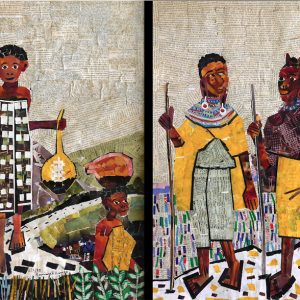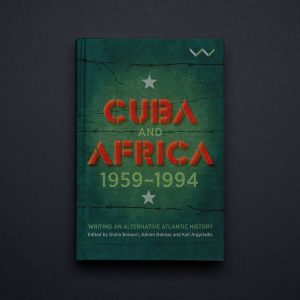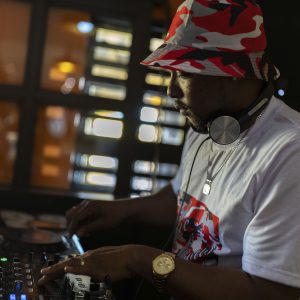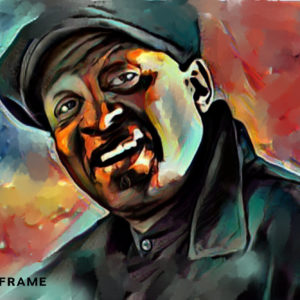Music in space, music in place
Kenyan sound artist Joseph Kamaru, known as KMRU, uses field recordings to create new sonic worlds that make people more keenly aware of their own environments.
Author:
15 September 2021

Three spectacular albums in 2020 have taken Kenyan sound artist Joseph Kamaru from up-and-coming sound sculptor to critic’s darling – and he insists there is more to come. “Last year’s albums, Peel, Jar and Opaquer are a glimpse of my sonic explorations with sound and field recording,” he says from his current home in Berlin.
Vienna-based label Editions Mego released Peel by KMRU – Kamaru’s moniker – in late July last year. Across its six compositions, the longest clocking in at just shy of 23 minutes, Peel unfolds in a complex and at times unfathomable sound world of ambient drones. Less than a month later, the eight-track Opaquer dropped on Ann Arbor-based label Dagoretti Records and a month after that the Frankfurt-based label Seil Records released an eight-track cassette titled Jar.
Related article:
These magnificent glimpses from KMRU rippled through the pool of global experimental music in 2020, earning rave reviews. The Guardian newspaper called KMRU “one of the leading ambient artists working today”, while music platform Bandcamp called him “one of the most prolific and innovative artists in his field”.
With a year like that any artist would be forgiven for taking a little time off, but in 2021 KMRU has been dropping releases on his Bandcamp page every other month. In February he released Falling Dreams, in April the Inter alia EP and in August the as is still is EP. In May, Injazero Records released KMRU’s new album Logue, in which he dives deeper into the world of field recordings.
Harvesting the field
Kamaru has been making music for six years but four years ago he bought a field recorder, initially intending to use it as a sound card. The field recorder opened Kamaru up to capturing found sounds from the environment – of which he was becoming more aware. Slowly, the field recorder morphed into a compositional tool. Eventually, he says, he stopped buying sample packs and spent all his time outside recording sounds and taking them back to the studio.
“I appreciate these sounds and how they bring a sense of memory not captured as image but something intangible,” Kamaru says. “Some recordings are purely untitled and play a role as sonic memories. Every time I listen back to old recordings, even unnamed recordings, I usually recall the happenings, what was around me then.”
Once back in the studio, Kamaru arranges and structures these field recordings, often layering new sounds over them to create soundscapes, which form an archive used to fashion KMRU’s compositions. As an example, Peel was created using field recordings of Nairobi streets, nature recordings from the island Lunkulu in Uganda and background ambiance from Montreal.
Related article:
“Most of my work is inspired by the field,” he says. “Using field recordings as creative composition tools is an impetus to reflect on the outside world, our surroundings, which are often ignored.”
He describes how he often first visits a place that he wants to record, studying it and listening deeply to the space. “I always revisit places and spaces where I do my field recordings and get attuned to their acoustic and sonic properties … becoming part of its soundscape.
“I later set a day to record the sounds and I reflect and listen to the surroundings while recording,” he says. “All field recordings I use in my music are very intentionally recorded and listened [to] places.”
Meditating on space
While Opaquer and Jar are equally superb albums, Peel grabbed the most attention last year. Recorded in April 2020 at the beginning of Nairobi’s Covid-19 lockdown, the album is an experiment in drone, according to Kamaru. “It’s one of the experiments that I did over a very short timespan, improvising and jamming with limited tools and only field recordings,” he says.
Kamaru argues that “droning” is found everywhere in our surroundings and is a musical concept that falls outside the Western approach to music. “It’s a musical device of our planet Earth and beyond and we can learn from them,” he says.
Editions Mego founder, the late Peter Rehberg, whose label released the record, said at the time Peel became the soundtrack to his lockdown in Berlin – and he was not alone. Scan the internet and you will find blog and social media posts from people who have never really listened to ambient music before discussing how Peel became a daily injection into their mundane lockdown lives. Kevin Nguyen, a journalist for tech publication The Verge, wrote about how when he listened to Peel daily, the sound experience changed according to the room he was in.
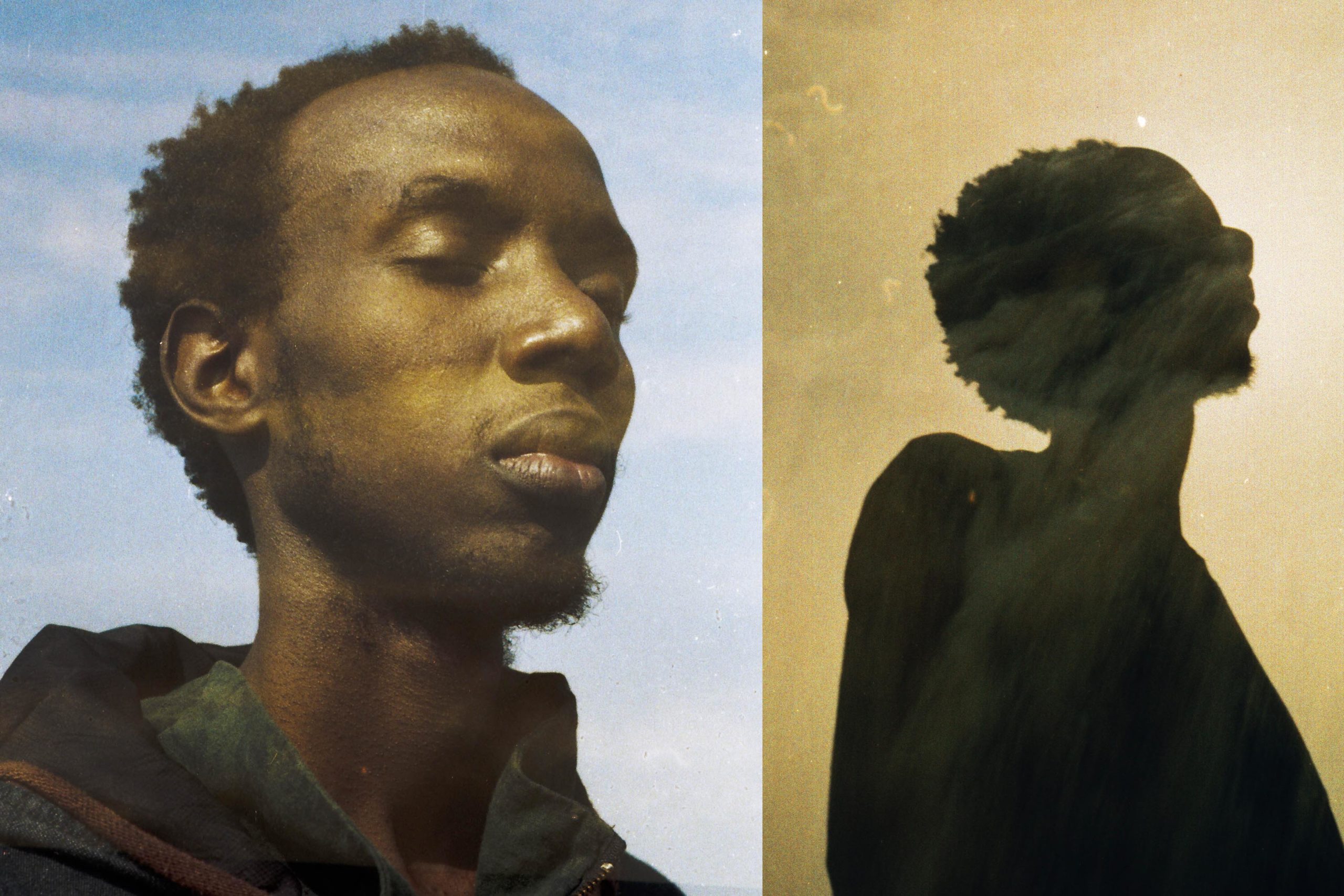
“The [speakers] in the kitchen made the record sound expansive and often distant; in my office, where I listened to Peel passively while staring at Google Docs during the workday, the resonance seemed to fill every square inch of the room, making me constantly aware of the space’s small dimensions. I’d sometimes play it through my phone after waking up, a calm and steadily escalating thrum.”
Considering that a deep sense of place is so central to Kamaru’s art, the spatial awareness it inspires in listeners is interesting. KMRU’s sound begins life as a meditation on space and then, through his process, emerges as pieces of art, which in turn make listeners more aware of the space they occupy.
It suggests the embodiment of what ambient pioneer Brian Eno meant when he said we should stop thinking about artworks as objects and start thinking about them as triggers for experiences: “What makes a work of art good for you is not something that’s already inside it but something that happens inside you.”
Related article:
If Peel resonated with listeners in 2020, a large part of that resonance was defined by what the listener brought to the album. KMRU’s art was simply the trigger. It is hardly surprising then that many listeners projected onto the work an isolated world ravaged by Covid-19.
But Kamaru, when asked about the response to Peel, says the album was definitely not a reaction to the pandemic. “I don’t think of Peel as a record related to isolation,” he says. “Although I’m glad that Peel brought solace to many people who got to discover it … Peel for me is a reminiscing album. I wrote it at a point in my life where things were uncertain.”
Perhaps in that revelation lies a little truth about Peel’s lockdown appeal, because one thing the pandemic has delivered in spades is uncertainty.
Opaquer and Jar
KMRU’s two other albums from 2020, Opaquer and Jar, were projects that began life before Peel but were finished during the Covid-19 lockdown.
Kamaru describes Opaquer as an album that explores “sound particles” or “minute sounds”. Its raw material is not field recording alone, but generated sounds and synthesisers too, which are layered over each other. On a song such as Lulla, the sound of traffic, a crying child, the call of a bird and percussive water sounds interact with deep, droning synthesisers to create a magical soundscape.
“The fluidity of natural elements, water and wind, are always fascinating and often inspire creation,” says Kamaru. “When I listen or observe my surroundings, I’m always intrigued by water bodies and how water sounds different on every surface. There’s an eloquence with water. It’s also ephemeral as sound.”
Related article:
Kamaru says his album Jar began in 2019 as a series of “freeform unsynced subtle synth improvisations”. Opener Degree of Change is a sublime piece of ambience, while the album’s closer, Change of Degree, sounds like Degree of Change running backwards, a harsher but rewarding sound experience.
The two song titles are reminiscent of Eno’s famous take on repetition in music. “Repetition doesn’t really exist,” he said. “As far as your mind is concerned, nothing happens the same twice, even if in every technical sense, the thing is identical, your perception is constantly shifting, it doesn’t stay in one place.”
Joseph Kamaru’s sonic fields are similar. They are in a state of constant flux, a collision of space and place, in which listeners are able to find themselves.

